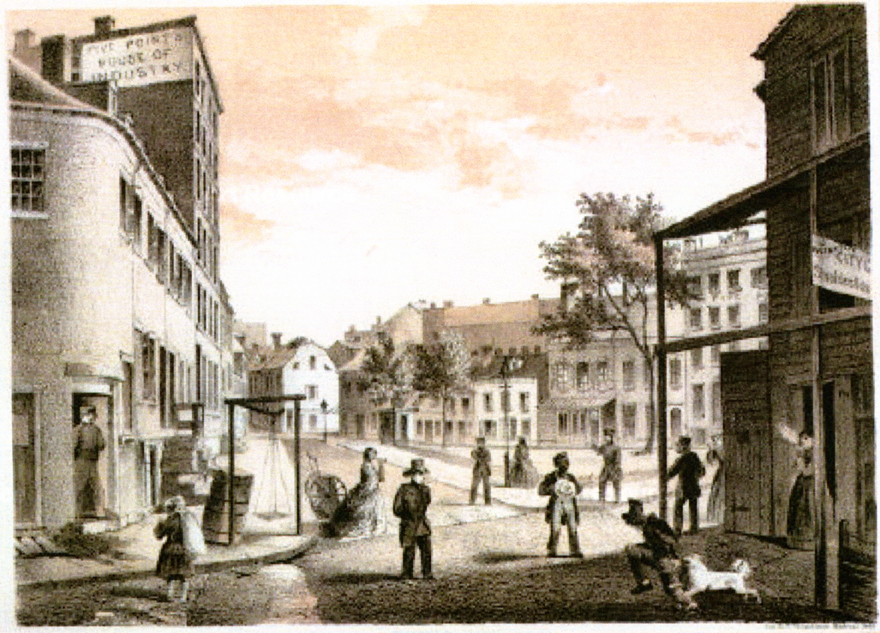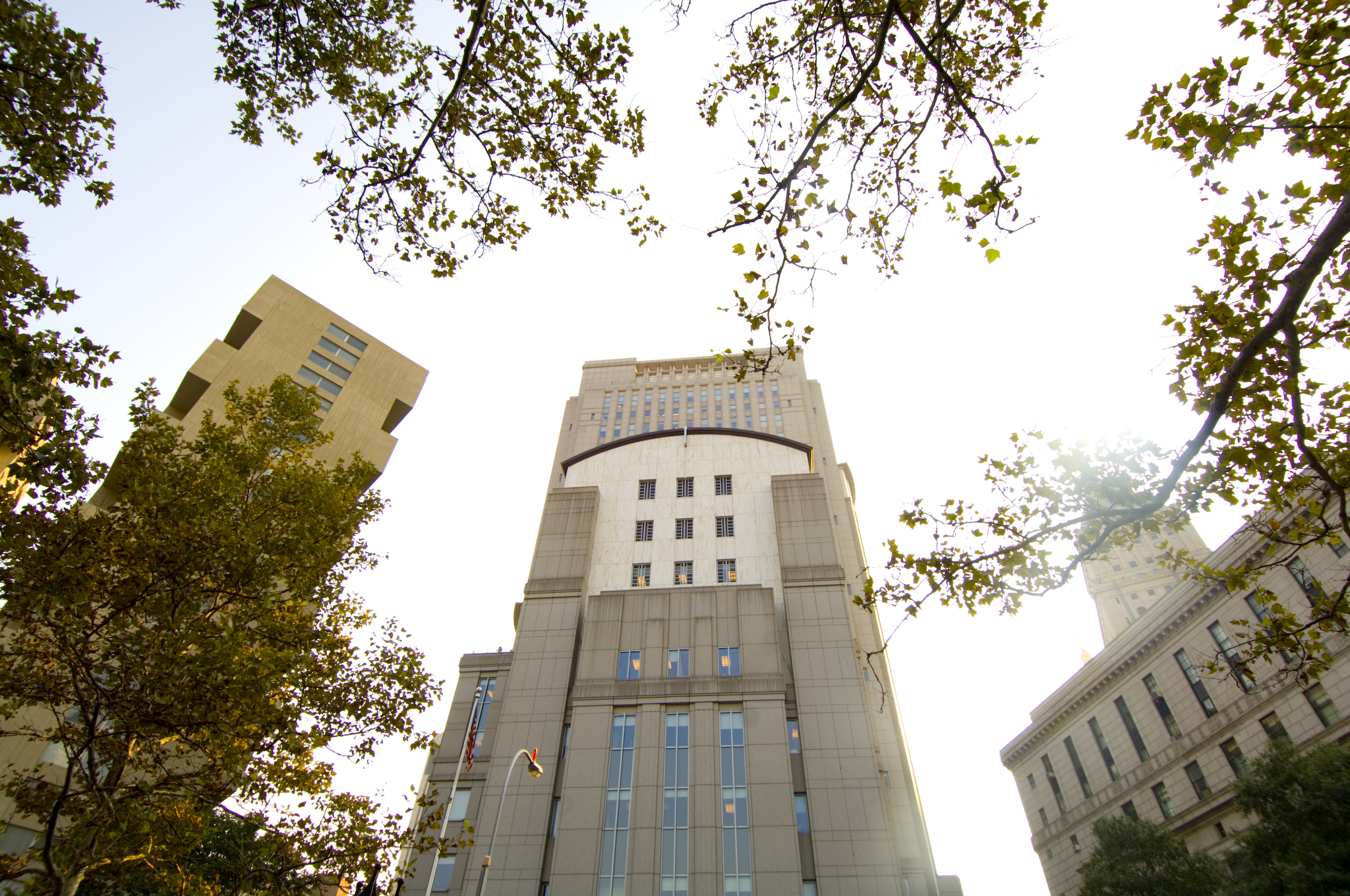Five Points was a neighborhood around the intersection of Worth Street, Baxter Street, and Cross Street, which no longer exists. It became a world-famous slum in the 1840s. In colonial times, however, it was a quiet place north of the city that included a pond, marshes, and a hill that overlooked it all. Africans buried their dead near the pond and lived nearby in a large area called “Land of the Blacks.”
By the early 1800s, however, the city was growing and housing was needed. The hill was removed and its earth, along with garbage, dumped into the pond. Homes and businesses were built on this landfill, but the ground was soft and damp; the houses soon began to rot and topple, and the unpaved streets turned to mud. As the housing decayed, New York’s first slum was born. Poor Irish and German immigrants moved in to live alongside the African Americans there.
The neighborhood became famous for crime and disease. But, more happily, it was also known for dance. Competitions between Irish and black musicians and dancers helped to invent a brand new dance form called tap dance.
Five Points was also where many abolitionist organizations were located. There was the Chatham Chapel, where black and white abolitionists met, and the African American Mutual Relief Hall. Churches such St. Philip’s African Episcopal Church and the African Bethlehem Church were part of the Underground Railroad, as were many of the homes in the area. Five Points was a dangerous neighborhood, but it was also a safe haven for those fleeing slavery.

